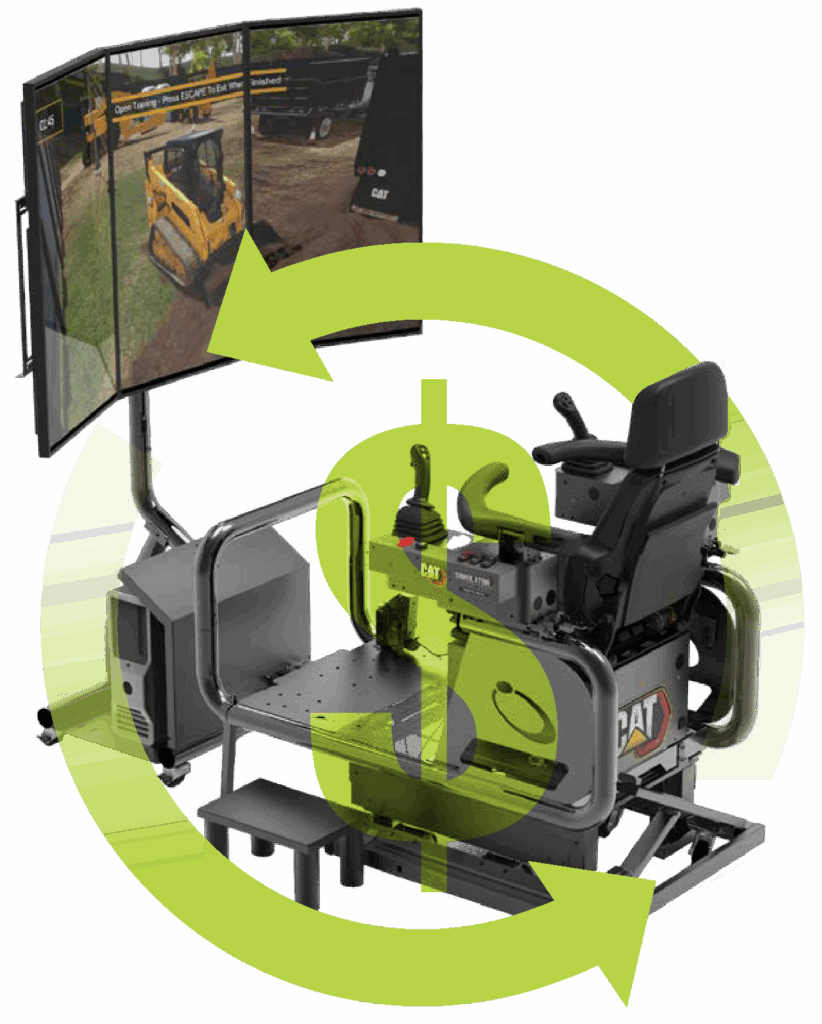ESTIMATE THE ROI
FOR SIMULATOR
TRAINING
Heavy equipment simulator training is becoming a standard for companies that want to increase safety awareness and productivity and reduce unplanned maintenance and fuel costs.
What is needed to convince a company’s leaders to invest in training? Most will ask for an explanation of the return on investment, a.k.a. ROI. By taking the time to do the homework, reliable data can be generated and presented to stakeholders during the decision-making process.

Follow our steps and simple template to create a business case to prove the ROI of simulator training.

Create a Business Case
Most stakeholders will look for a formal proposal for any investment. Write a business case for simulators based on the specific training needs of your business. Follow the outline below and customize it based on your company’s needs.

Summary of the Intention
Begin with a short summary of the intention to acquire training simulators as a level-set for stakeholders. Here is an example:
This business case proposes acquiring simulators to better engage and more efficiently train employees in our company’s heavy equipment operator training program. By integrating simulation technology, we aim to improve workforce competency, safety, and operational efficiency, while reducing training costs, equipment wear and fuel consumption. Additionally, the simulators will allow us to measure and track employees’ progress through built-in reporting.”
Business Need
Explain the business needs to stakeholders:
A structured and effective training solution is needed to address skill gaps, enhance employee preparedness and improve overall productivity. Traditional training methods are costly, time-consuming, and often expose employees to unnecessary risks. In addition, machines used for training must be taken out of production, further affecting the bottom line. Simulators offer a controlled, repeatable and scalable training environment. Operational goals can be identified and met through simulation training.”
Implementation Plan
Phase 1
Work with a Cat Simulators account manager to identify key training needs and select the appropriate machine simulators.
Phase 2
Purchase and install simulators in designated training facilities.
Phase 3
Work with Cat Simulators trainers to integrate simulation into existing programs or create a new program.
Phase 4
Monitor effectiveness through built-in performance tracking software and continuous improvement initiatives.
Looking for Advanced Calculations?
Check out our advanced ROI calculator for a more in-depth look at your potential cost savings!


